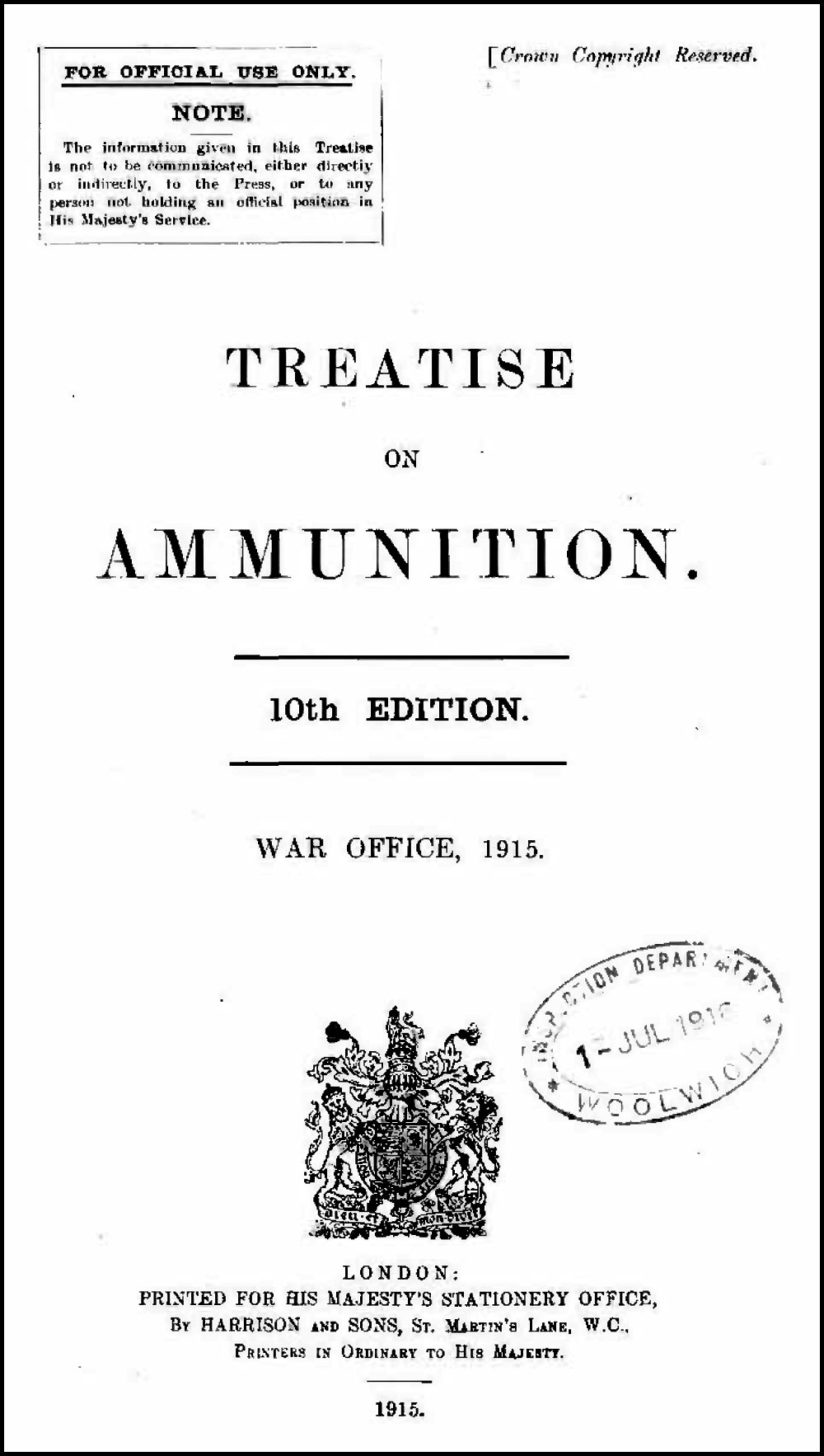Carlingnose Battery – Ammunition
| < The guns | Δ Index | Field and Range > |
Shells and cartridges were held in underground magazines and transferred separately to the gun emplacements using vertical band lifts for cartridges and sloping ladder lifts for the heavier shells.
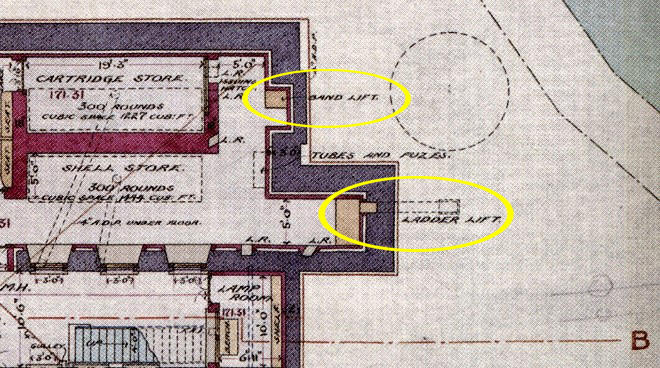 Lifts at Magazine Level
Lifts at Magazine Level
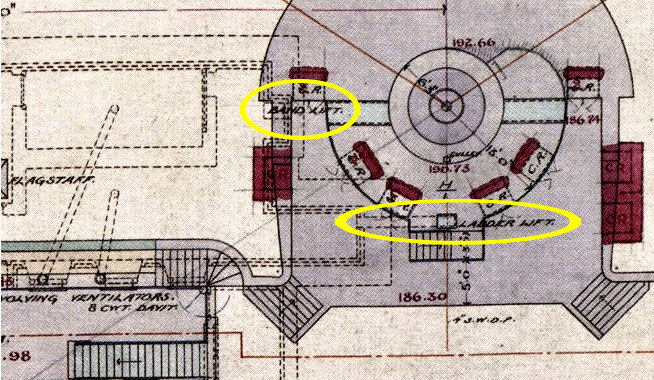 Lifts at Gun deck level lifts
Lifts at Gun deck level lifts
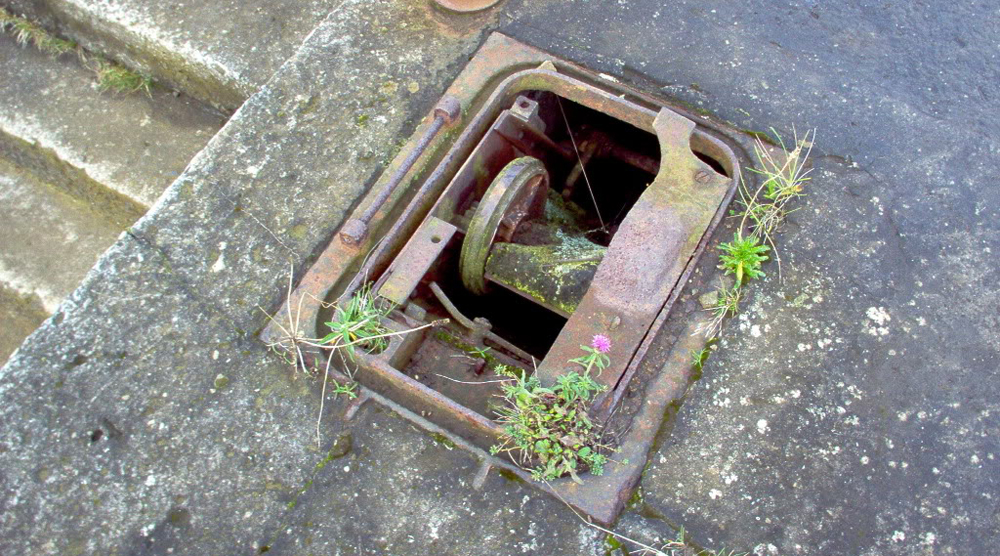 The top of a band lift at Carlingnose
The top of a band lift at Carlingnose
Cartridges
The cartridges were silk bags of cordite. They could withstand rough handling or being dropped, unlike the heavy shells. A 6 inch gun cartridge consisting of two half-charges of cordite bound together to form a full-charge cartridge of 23 lb (10.5 kg) cordite. (A half charge could be used for close-range firing.)
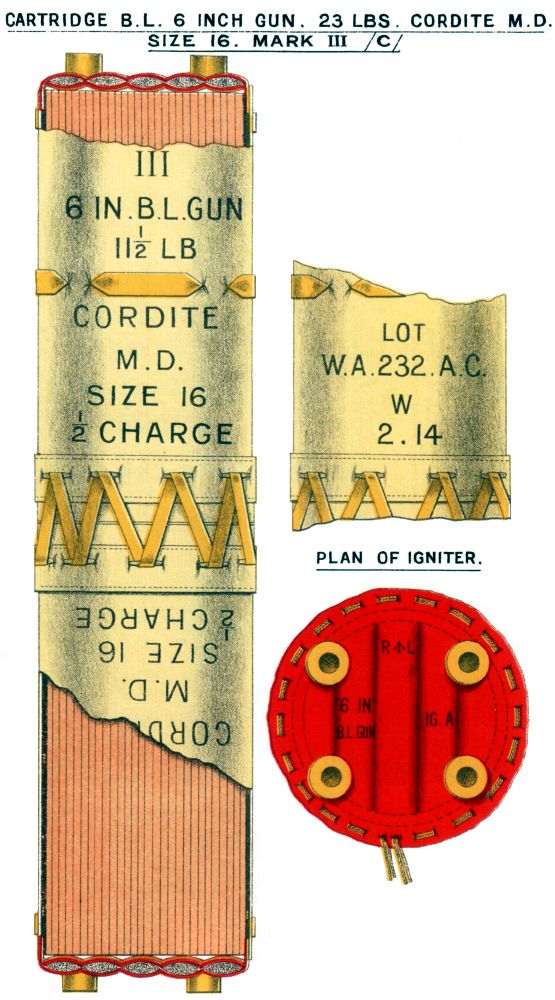 A 6 inch gun cartridge
A 6 inch gun cartridge
The 6-inch guns were originally developed as naval guns, where one advantage of a silk bag cartridge is that it weighs less than a brass-bound cartridge. Secondly, the entire cartridge is consumed as each round is fired – there is no empty hot brass cartridge to manhandle and dispose of in a ship’s tight turret. However the ignition chamber has to be checked after each shot is fired to ensure there are no smouldering remains which could ignite the next cartridge when it is inserted!
Shells
 6 inch shells
6 inch shells
The shells weighed 100lb (45kg each) and needed to be handled carefully.
They were transferred on sloping ladder lifts from the magazines
 A ladder lift at Carlingnose.
A ladder lift at Carlingnose.
Several different types of shell were used – depending on circumstances. These included High Explosive, Armour-Piercing, Shrapnel, and Dummy shells for practice.
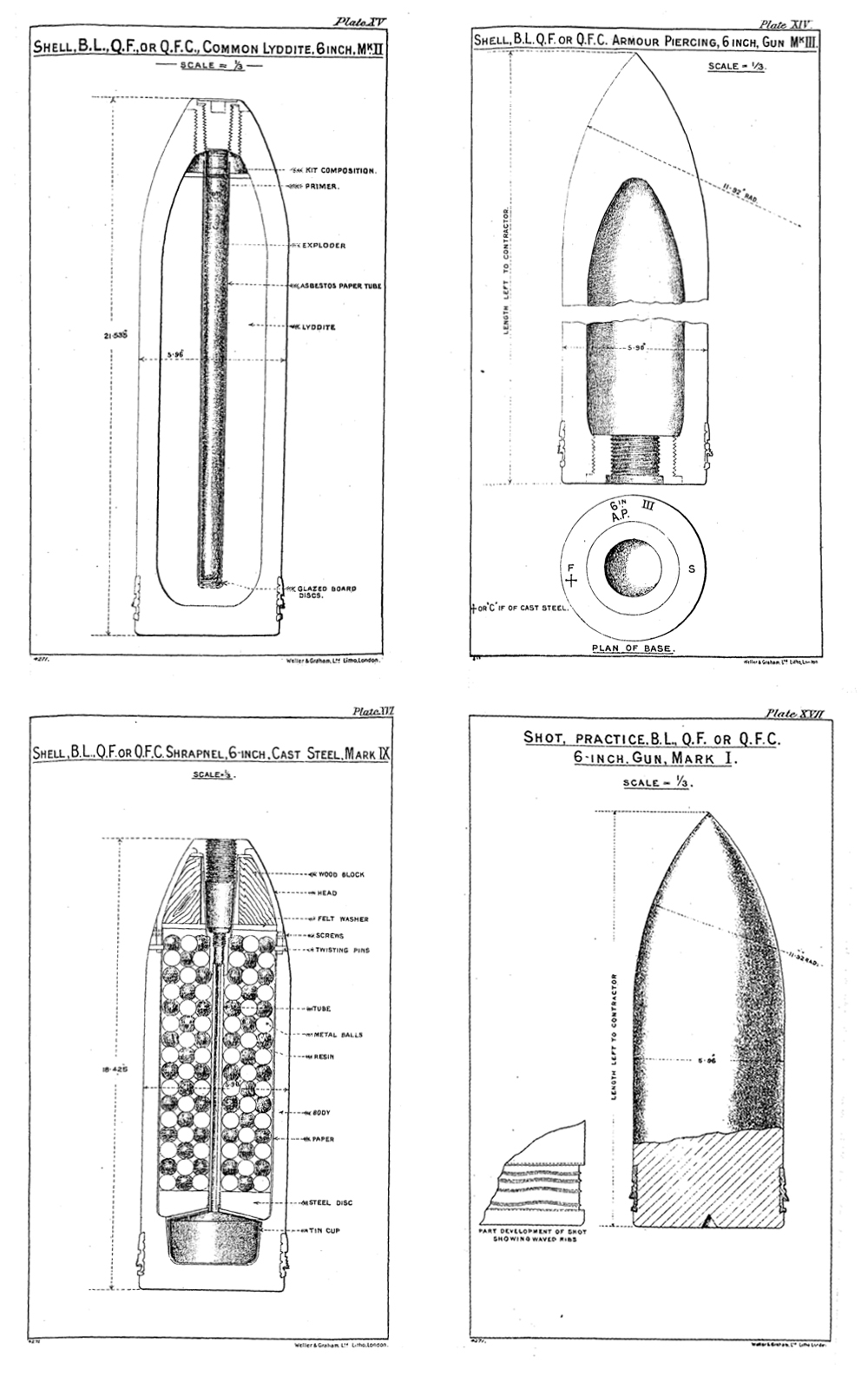
For more information, see the Treatise on Ammunition, 1915
| < The guns | Δ Index | Field and Range > |
top of page

